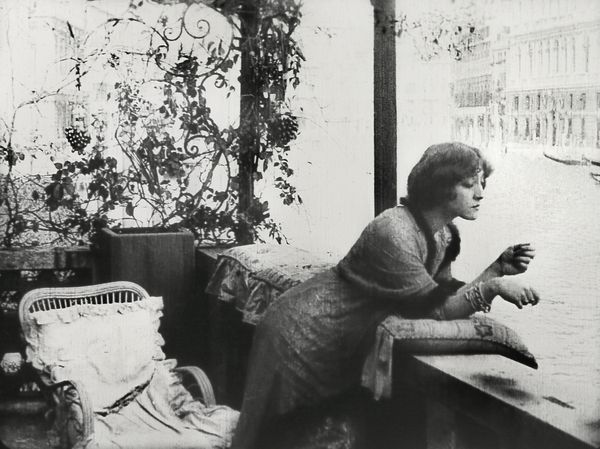LA MEMORIA DELL’ALTRO
Alberto Degli Abbati (IT 1914)
Just a few months separated the release of Ma l’amor mio non muore!, directed by Mario Caserini, and Alberto Degli Abbati’s La memoria dell’altro, both starring Lyda Borelli and Mario Bonnard. The impetuous Caserini had suddenly left Ambrosio to become one of the founders of a new company, “Film Artistica Gloria”, in Turin in 1913. An interesting event in itself, but also important in understanding how the Italian film industry at the time was developing through the quest for artistic independence and commercial expansion. Among Gloria’s first productions, Ma l’amor mio non muore! was the model for a whole series of romantic dramas with a bourgeois setting, where the purity of the aesthetic lines of the photographic planes combine with the beauty of the close-ups.
Ma l’amor mio non muore! was also the film that revealed the diva Lyda Borelli to the world, in her film debut. It also marked the beginning of her teaming with Mario Bonnard, who not only played in support to the great actress, but whose characterization was fundamental to the story and indispensable to the dramatic ending, where one remains impressed with the “aristocratic elegance of its characters, their rich and stylish clothes, their sober and noble actions, their free and confident bearing”. La memoria dell’altro, made in the wake of the enormous success of its predecessor, continued the trend; the two films became categorized as the first of “the Lyda Borelli series”.
The young aviatrix Lyda (Lyda Borelli) spurns the advances of the Prince of Sèvre (Vittorio Rossi Pianelli) and falls in love with the journalist Mario (Mario Bonnard), who, although engaged to Cesarina (Letizia Quaranta), goes to Lyda’s home for an assignation. Cesarina sees them and manages to persuade Mario to leave Lyda. Now alone, Lyda accepts the Prince’s advances. Some time later in Venice the star-crossed lovers meet by chance in a theatre, re-igniting their memoria and their old love in a succession of romantic scenes.
Written by Gloria company author Baroness Vittorina De Rege, the story has the sure ability to create a complex, articulate picture of the human heart. Lyda’s character glows with sensuality, and the story gives more than a nod to women’s emancipation, with the magnificent opening scene of an airplane in flight, a metaphor for modernity, just as the power and abandon of the apache dance in the second part of the film confirm the independence of the female character.
Mario Bonnard partners Borelli elegantly, providing a perfect counterbalance for the actress’s exuberance, and giving the performance of a “highly effective actor, at the same time sober, measured, and honest”. He is there, in the scene, but we could almost say that he isn’t; his most obvious trademark is the extreme flexibility – one critic called it camouflage – with which he enters the shot and performs his role without excess, but with distinction. This second appearance confirmed Bonnard’s skill in evoking the cliché of the tragic male; yet despite its success, he had the wisdom to part company with such type-casting later in his career.
Adding to the film’s success were the Venice locations, among them vaporetto trips and wonderful shots of the Piazza San Marco. The direction was in the capable hands of the versatile Alberto Degli Abbati.
The DCP being shown was made by the CSC – Cineteca Nazionale from a duplicate negative printed in 1977 from a vintage nitrate copy that is no longer available.
Marcello Seregni

regia/dir: Alberto Degli Abbati.
sogg/story: Baronessa Vittorina De Rege.
photog: Angelo Scalenghe.
cast: Lyda Borelli (l’aviatrice/the aviatrix Lyda), Mario Bonnard (Mario Alberti), Vittorio Rossi Pianelli (il principe di/Prince of Sèvre), Letizia Quaranta (Cesarina), Felice Metellio (il giornalista/the journalist), Emilio Petacci.
prod: Film Artistica “Gloria”, Torino.
v.c./censor date: 24.12.1913 (n. 2084).
uscita/rel: 01.1914.
copia/copy: DCP, 72′; did./titles: ITA.
fonte/source: Fondazione CSC – Cineteca Nazionale, Roma.


 Italiano
Italiano